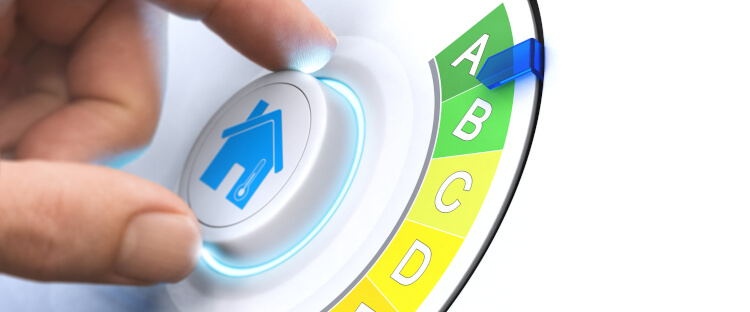
In the wake of an energy crisis, homeowners are doing everything they can to bring their bills down. With the cost of living also adding to the pressure many of us are feeling in 2023, it’s important to find solutions at home to give us some breathing room.
Green features are a great way for homeowners to not only reduce their bills and energy consumption but also to improve the environment they live in. From first-time buyers to expanding families that need a larger home, here are the most in-demand green features for homeowners in 2023 to look out for.
Passive housing is a commitment to sustainability and energy efficiency that is typically done at the design and building stage of a home. It is based on affordability, efficiency and high-quality materials to help reduce a household’s ecological footprint.
While great for homeowners building a new house, it’s also possible to retrofit an existing property to include passive design elements.
These home insulation features take advantage of elements like natural light, breeze and wind or thermal mass to reduce the need for heating and cooling. This might be through installing trees and bushes to create natural shade in part of your house for the summer or installing large windows that can partially heat rooms through sunlight.
Electric vehicles are becoming more prominent on our roads and the zero-emissions form of transport has become a hit with UK drivers. However, not all homes have an EV charger installed yet and for many people, without somewhere to charge an electric car they won’t be able to get one.
When looking for properties, homeowners are seeking charging solutions and electric vehicle charging installations are now a search filter for potential homebuyers on property portals.
Homes that only have on-street parking can pose a problem for those with electric vehicles, or those contemplating buying them soon. However, some properties may be able to drop the kerb to open the front garden as a charging location option upon application with the council.
The rising cost of heating and powering our homes is leading to more and more of us getting smart with managing our energy bills. Smart home tech like thermostats allow us to control when our heating comes on and avoid warming up an empty home which is a waste of energy.
Cutting costs is essential for the majority of us and smart home tech is the pathway to savings. From switching to LED lights that use up to 90% less energy to smart plugs and lights that turn themselves off, gadgets are helping homeowners with reduced bills and greener energy management.
Home insulation is a core sustainable feature and upgrade for many homes across the country. With energy being so expensive, whether you use gas, electricity or renewable energy, wasting the heat produced through bad insulation isn’t sustainable.
Homes can lose as much as 35% of their heat from poorly insulated walls alone, with windows, doors and roofs also significant contributors to energy waste if insulation is not adequate.
New and existing homeowners are in search of effective insulation that does its job and keeps heat in and inclement weather out. From double and triple glazing to sustainable insulation materials, we must have effective climate control for all seasons in our homes to avoid overusing our heating and cooling systems.
Homeowners are doing their best to save as much energy as possible in 2023, but many are also looking to switch to alternative solutions for heating and powering their properties. Conscientious homeowners are seeking renewable energy solutions to help combat climate change through greener methods. Some of the most common alternative energy solutions for homes include air source heat pumps, ground source heat pumps and solar panels.
When trying to make their home greener, some people are taking that literally and creating a living roof that provides insulation and sustainable benefits. Living roofs are sometimes called garden roofs and they are either all or part of a roof that is completely covered in vegetation.
This layer of soil and plant life helps act as a rainwater buffer which puts less strain on your guttering system while also purifying the air surrounding your home.
Homes with a living roof can save energy as this barrier better regulates the indoor temperature through evapotranspiration. This further helps reduce and control the ambient temperature inside a home, keeping warm air inside when it’s needed and repelling heat from the sun in the summer.
When buying a new home it is important to understand as much about it as possible before moving in. A good indicator of how many green upgrades you may need to install once you move in is the Energy Performance Certificate (EPC), which determines how energy efficient a home is.
Finally, it is also prudent to arrange a survey from a RICS Chartered Surveyor to help you make an informed decision about your property or investment regarding its condition and services. If you would like to arrange a survey or find out more information about the services we offer at Cosey Homes, please get in touch with a member of our team on 0330 053 5823 or through our contact form today.